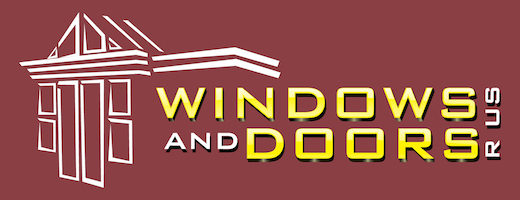




Fidel Laurence
Understanding UPVC Windows and Doors: The Ultimate Guide
In recent years, the appeal of UPVC (unplasticized polyvinyl chloride) windows and doors has actually risen, and for good factor. These items provide a perfect blend of efficiency, design, and durability, making them an ideal choice for property owners and contractors alike. This post digs into the numerous elements of UPVC windows and doors, exploring their advantages, expenses, maintenance, and frequently asked questions.
What is UPVC?
UPVC is a type of plastic that is widely utilized in the construction market, especially for doors and Window & Door frames. Unlike regular PVC, UPVC does not include plasticizers, which makes it stiff and appropriate for structural applications. The product is resistant to moisture and ecological destruction, providing it a longer life-span compared to traditional materials like wood and metal.
Advantages of UPVC Windows and Doors
Sturdiness: UPVC is extremely resistant to rot, deterioration, and fading, making it an outstanding choice for climates with extreme weather.
Energy Efficiency: UPVC frames can help enhance the energy efficiency of homes. They are outstanding insulators, which suggests they can help in reducing heating and cooling costs.
Low Maintenance: Unlike wooden frames that may require routine painting and sealing, UPVC can just be cleaned up with soap and water, preserving its appearance with minimal effort.
Cost-efficient: Although the initial investment might be higher than aluminum or wooden choices, the long lifespan and low maintenance requirements of UPVC make it a more affordable option in time.
Aesthetically Pleasing: UPVC windows and doors been available in different designs and colors, making sure homeowners can find an option that complements their residential or commercial property.
Table 1: Comparison of UPVC with Other MaterialsFeatureUPVCWoodAluminumToughnessExtremely resilientProne to rot & & decayCorrosion resistantEnergy EfficiencyExcellent insulationModerate insulationGood insulationUpkeepLow maintenanceHigh maintenanceModerate maintenanceExpense (Initial)Moderate to highHighModerateLook OptionsVariety readily availableNatural finishesModern ends upTypes of UPVC Windows and Doors
UPVC products can be found in numerous designs to fit various architectural styles and personal preferences. Some common types consist of:
Windows:Casement Windows: Hinged at the side, these windows open outward, supplying exceptional ventilation.Sliding Windows: These windows run on a track, enabling for easy opening and closing.Sash Windows: Featuring sliding panes, sash windows provide a traditional appearance and performance.Tilt and Turn Windows: Versatile in style, these windows can tilt for ventilation or turn totally for simple cleansing.Doors:UPVC Front Doors: Designed to provide security and insulation, these doors are readily available in different styles.French Doors: These double doors open external and produce a seamless link to outside spaces.Sliding Patio Doors: Ideal for maximizing views and natural light, these doors operate efficiently along a track.Bi-fold Doors: These doors can fold back to produce an open area, best for entertaining or connecting indoor and outdoor areas.Benefits of UPVC Doors and Windows
Increased Security: UPVC doors and windows are frequently fitted with multi-point locking systems, making them a safe choice for homes.
Sound Reduction: The insulation homes of UPVC assistance in minimizing noise contamination, producing a quieter indoor environment.
Ecologically Friendly: UPVC is recyclable, making it a sustainable choice for environmentally conscious customers.
Adjustable: With alternatives for various colors, finishes, and hardware, UPVC items can be tailored to match any home decoration.
Setup Process
The setup of UPVC windows and doors is vital for ensuring their functionality and durability. Here are the key steps associated with the installation procedure:
Measurement: Accurate measurements of the existing openings are taken.
Preparation: The old frames are removed, and the location is cleaned up and prepped for the new setup.
Positioning: The new UPVC frames are placed, ensuring they fit comfortably within the openings.
Sealing: The frames are sealed utilizing proper sealing products to prevent drafts and water ingress.
Ending up: Final adjustments are made to guarantee the windows and doors run efficiently, and any finishing touches are included.
Upkeep Tips for UPVC Windows and Doors
To keep UPVC doors and windows in great condition, the following maintenance tips are recommended:
Regular Cleaning: Use a moist cloth or sponge with mild soap to clean down the frames and glass surface areas. Avoid harsh chemicals that can damage the product.
Check Seals and Locks: Regularly examine the sealing and locking systems to ensure they are operating properly.
Lubricate Moving Parts: Use a silicone-based lube on hinges and locks to keep them running smoothly.
Inspect for Damage: Periodically examine for any visible damage or wear to address problems before they intensify.
Frequently Asked Questions About UPVC Windows and Doors
For how long do UPVC windows and doors last?
UPVC windows and doors can last upwards of 20 years with proper upkeep.
Are UPVC items energy effective?
Yes, UPVC provides exceptional insulation homes, which can substantially enhance energy efficiency in homes.
Can UPVC windows be painted?
While UPVC can be painted, it's usually not recommended, as this might void guarantees and impact the product's integrity.
Are UPVC products recyclable?
Yes, UPVC is recyclable, making it an eco-friendly option.
Can I install UPVC windows and doors myself?
While DIY installation is possible, it is advised to employ experts for appropriate and safe installation.
In summary, UPVC windows and doors provide a myriad of benefits that make them a wise financial investment for house owners. Their sturdiness, energy performance, low maintenance needs, and large range of styles position them as an appealing option in the market. Understanding the qualities and advantages of UPVC can help consumers make informed decisions when updating or developing their homes. As sustainability continues to end up being increasingly essential, products like UPVC will stay at the leading edge of contemporary construction.
In recent years, the appeal of UPVC (unplasticized polyvinyl chloride) windows and doors has actually risen, and for good factor. These items provide a perfect blend of efficiency, design, and durability, making them an ideal choice for property owners and contractors alike. This post digs into the numerous elements of UPVC windows and doors, exploring their advantages, expenses, maintenance, and frequently asked questions.
What is UPVC?
UPVC is a type of plastic that is widely utilized in the construction market, especially for doors and Window & Door frames. Unlike regular PVC, UPVC does not include plasticizers, which makes it stiff and appropriate for structural applications. The product is resistant to moisture and ecological destruction, providing it a longer life-span compared to traditional materials like wood and metal.
Advantages of UPVC Windows and Doors
Sturdiness: UPVC is extremely resistant to rot, deterioration, and fading, making it an outstanding choice for climates with extreme weather.
Energy Efficiency: UPVC frames can help enhance the energy efficiency of homes. They are outstanding insulators, which suggests they can help in reducing heating and cooling costs.
Low Maintenance: Unlike wooden frames that may require routine painting and sealing, UPVC can just be cleaned up with soap and water, preserving its appearance with minimal effort.
Cost-efficient: Although the initial investment might be higher than aluminum or wooden choices, the long lifespan and low maintenance requirements of UPVC make it a more affordable option in time.
Aesthetically Pleasing: UPVC windows and doors been available in different designs and colors, making sure homeowners can find an option that complements their residential or commercial property.
Table 1: Comparison of UPVC with Other MaterialsFeatureUPVCWoodAluminumToughnessExtremely resilientProne to rot & & decayCorrosion resistantEnergy EfficiencyExcellent insulationModerate insulationGood insulationUpkeepLow maintenanceHigh maintenanceModerate maintenanceExpense (Initial)Moderate to highHighModerateLook OptionsVariety readily availableNatural finishesModern ends upTypes of UPVC Windows and Doors
UPVC products can be found in numerous designs to fit various architectural styles and personal preferences. Some common types consist of:
Windows:Casement Windows: Hinged at the side, these windows open outward, supplying exceptional ventilation.Sliding Windows: These windows run on a track, enabling for easy opening and closing.Sash Windows: Featuring sliding panes, sash windows provide a traditional appearance and performance.Tilt and Turn Windows: Versatile in style, these windows can tilt for ventilation or turn totally for simple cleansing.Doors:UPVC Front Doors: Designed to provide security and insulation, these doors are readily available in different styles.French Doors: These double doors open external and produce a seamless link to outside spaces.Sliding Patio Doors: Ideal for maximizing views and natural light, these doors operate efficiently along a track.Bi-fold Doors: These doors can fold back to produce an open area, best for entertaining or connecting indoor and outdoor areas.Benefits of UPVC Doors and Windows
Increased Security: UPVC doors and windows are frequently fitted with multi-point locking systems, making them a safe choice for homes.
Sound Reduction: The insulation homes of UPVC assistance in minimizing noise contamination, producing a quieter indoor environment.
Ecologically Friendly: UPVC is recyclable, making it a sustainable choice for environmentally conscious customers.
Adjustable: With alternatives for various colors, finishes, and hardware, UPVC items can be tailored to match any home decoration.
Setup Process
The setup of UPVC windows and doors is vital for ensuring their functionality and durability. Here are the key steps associated with the installation procedure:
Measurement: Accurate measurements of the existing openings are taken.
Preparation: The old frames are removed, and the location is cleaned up and prepped for the new setup.
Positioning: The new UPVC frames are placed, ensuring they fit comfortably within the openings.
Sealing: The frames are sealed utilizing proper sealing products to prevent drafts and water ingress.
Ending up: Final adjustments are made to guarantee the windows and doors run efficiently, and any finishing touches are included.
Upkeep Tips for UPVC Windows and Doors
To keep UPVC doors and windows in great condition, the following maintenance tips are recommended:
Regular Cleaning: Use a moist cloth or sponge with mild soap to clean down the frames and glass surface areas. Avoid harsh chemicals that can damage the product.
Check Seals and Locks: Regularly examine the sealing and locking systems to ensure they are operating properly.
Lubricate Moving Parts: Use a silicone-based lube on hinges and locks to keep them running smoothly.
Inspect for Damage: Periodically examine for any visible damage or wear to address problems before they intensify.
Frequently Asked Questions About UPVC Windows and Doors
For how long do UPVC windows and doors last?
UPVC windows and doors can last upwards of 20 years with proper upkeep.
Are UPVC items energy effective?
Yes, UPVC provides exceptional insulation homes, which can substantially enhance energy efficiency in homes.
Can UPVC windows be painted?
While UPVC can be painted, it's usually not recommended, as this might void guarantees and impact the product's integrity.
Are UPVC products recyclable?
Yes, UPVC is recyclable, making it an eco-friendly option.
Can I install UPVC windows and doors myself?
While DIY installation is possible, it is advised to employ experts for appropriate and safe installation.
In summary, UPVC windows and doors provide a myriad of benefits that make them a wise financial investment for house owners. Their sturdiness, energy performance, low maintenance needs, and large range of styles position them as an appealing option in the market. Understanding the qualities and advantages of UPVC can help consumers make informed decisions when updating or developing their homes. As sustainability continues to end up being increasingly essential, products like UPVC will stay at the leading edge of contemporary construction.
Made By MD Card
 Italian
Italian
 Arabic
Arabic
 Chinese
Chinese
 English
English
 French
French
 German
German
 Portuguese
Portuguese
 Russian
Russian
 Spanish
Spanish
 Turkish
Turkish
